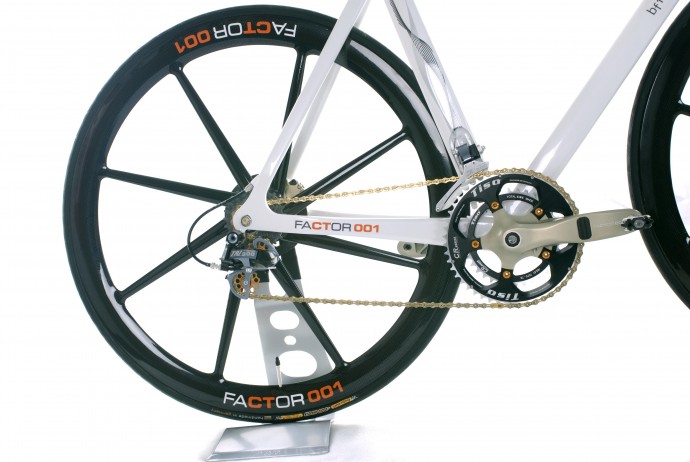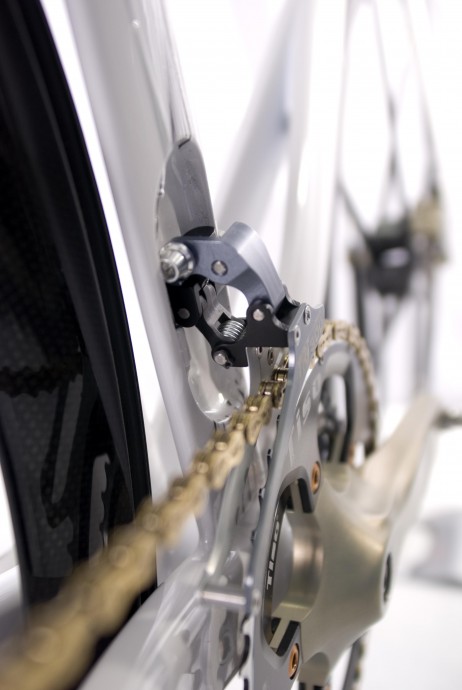- News
- Reviews
- Bikes
- Accessories
- Accessories - misc
- Computer mounts
- Bags
- Bar ends
- Bike bags & cases
- Bottle cages
- Bottles
- Cameras
- Car racks
- Child seats
- Computers
- Glasses
- GPS units
- Helmets
- Lights - front
- Lights - rear
- Lights - sets
- Locks
- Mirrors
- Mudguards
- Racks
- Pumps & CO2 inflators
- Puncture kits
- Reflectives
- Smart watches
- Stands and racks
- Trailers
- Clothing
- Components
- Bar tape & grips
- Bottom brackets
- Brake & gear cables
- Brake & STI levers
- Brake pads & spares
- Brakes
- Cassettes & freewheels
- Chains
- Chainsets & chainrings
- Derailleurs - front
- Derailleurs - rear
- Forks
- Gear levers & shifters
- Groupsets
- Handlebars & extensions
- Headsets
- Hubs
- Inner tubes
- Pedals
- Quick releases & skewers
- Saddles
- Seatposts
- Stems
- Wheels
- Tyres
- Health, fitness and nutrition
- Tools and workshop
- Miscellaneous
- Tubeless valves
- Buyers Guides
- Features
- Forum
- Recommends
- Podcast
TECH NEWS
 news_2755_1_original.jpg
news_2755_1_original.jpgFactor 001: “The most advanced bicycle in the world” launched at Science Museum
A state-of-the-art road bike designed as a training aid for world-class athletes has been launched at the Science Museum by a company which designs technology for Formula 1.
The Factor 001, dubbed “The most advanced bicycle in the world,” by its makers, BERU F1 Systems, is a road bike with a difference - incorporating the latest electronic systems to provide laboratory-grade technical information on a cyclist’s performance, gathered on the road.
The £20,000 bike is part of an exhibition at the Science Museum, in London, entitled, Fast Forward: 20 ways F1 is changing our world, featuring innovative products ranging from a high-tech wheelchair to a carbon fibre “baby pod” and state-of-the-art non-slip boots.
The bike is equipped with a fully integrated, multi-channel ergonometric data recording system which can chart left and right leg power down to one degree increments.
It has a lightweight (the whole bike weighs under 7 kg) carbon fibre monocoque structure and its dimensions can be adjusted to the exact physical requirements of the rider – who will be treated to a Formula One driver-style seat fit experience, prior to the bike being built.
The makers claim the single piece frame avoids the use of structural joins which can reduce rigidity by 15 percent while its M55J carbon fibre is the stiffest unidirectional material on the market says the company.

Other features include ultra strong 8-spoke wheels, also made of composite materials, designed to resist lateral forces, keeping them true through pothole strikes and energetic sprints.
With all this power at the sportsman or woman’s fingertips, it’s probably a good job the bike is fitted with a similarly state-of-the-art braking system - a hydraulic disc design using a carbon-ceramic composite - a motorsport-grade material said to offer the same performance in wet or dry conditions.
But it is the fully integrated performance monitoring system that transforms the Factor 001 from highly efficient road transport into scientific training tool and this is what seems to be getting the training institutes excited.

The physiological data collection package uses equipment designed for use by paramedics to measure everything from ECG data to respiration rate, skin and core body temperature. An accelerometer measures the cyclist’s left and right lean, and all the information is transmitted by a Bluetooth system attached to the handlebars.
At around £20,000 it’s nice that the makers have thrown in an onboard GPS system to avoid the cyclist straying into unfriendly territory and getting the thing nicked. OK, that would be pretty unlikely anyway but the GPS will allow trainers to build up a real time picture of road conditions and rider performance.The company says: "We want to take the very latest technologies from motor sport, from aerospace and from the world’s top materials research laboratories and apply them to one of humankind’s most elegant and enduring inventions: the bicycle."
Simon Roberts, the engineer leading the project, told road.cc: “We wanted a new challenging project and to show what could be done without really looking at any rule books and no constraints on geometry - using it as an engineering exercise.
“It allows laboratory data you can normally gain in a static environment to be collected on the road or a velodrome in real time.
“We’re getting a lot of enquiries from sporting institutes to do with the electronic packages on it. It’s acting as a springboard into other sports arenas for the training industry. I can’t tell you the details but we’re speaking with some very high up cycling institutes in this country and others around the world.”
See how the Factor 001 compares to our own attempts at creating the world's most expensive bike.
The exhibition at the Science Museum runs until April 5, 2010.
To find out more about the Factor 001, visit the website: www.factor001.com
Fashion. It's kind of modern drillium - people always want lighter (or at least to feel that they're optimising the "negatives" of weight / drag).
Well it can be possible (I don't own a car and some others on the forum don't either). I think there are benefits if you decide to do - and...
Depends on whether he's on Strava or not.
What is the load path here - where do the forces go?...
And to compensate for at least forty years of anti-bicycle bias, one programme a day for the next five years promoting cycling.
That's not true of identifiable public spending. For balance, you'd have to note the much greater contribution to the Exchequer made by London too ...
Driving is a right embedded in the Maggie Carter (sic)...
Once again vehicles take priority. Hardly surprised these days and only goes on to highlight how little the council's and gvt genuinely care for...
There appears to be a bollard at a 45º angle mostly obscured by the bins - presumably they were able to remove that and then drive through the gap.
Have to say as a long time and multiple (7 bikes) user of Camapg - I have about half the fleet on genuine rivetted Campag chains and half on SRAM...